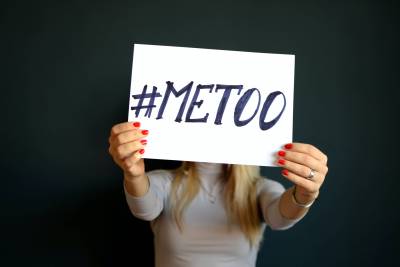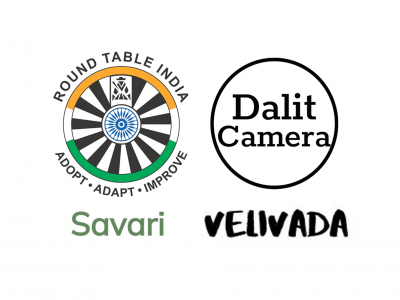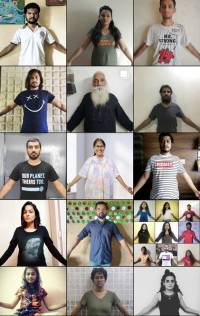Can digital movements really move the status quo?
Can digital movements really move the status quo?
A digital campaigner’s peek into why people like him are misunderstood and misrepresented.
“Tweet” “Tweet” “Tweet” BOOM. The world changes.
More often than not, some people want to believe this is how ‘digital movements’ work: That an idea brews in some minds, they tweet about it, and the world comes rallying behind.
While it sounds safe to believe, that is just not how it works.
There are 2 kinds of digital movements that I have been a part of. Those that were born digitally, and others that project whatever is happening offline onto the virtual world. Yes, there are spurts of serendipity when just a hashtag can shake the world but most successful “digital” movements have had months of on-ground work to make them impactful. Right from thinking, planning, strategising, organising, to executing, everything is mostly in the physical world. Hence, ‘digital’ is just a medium. I will try and talk about this aspect of digital activism.
Crammed with influencers, trending topics and puppy & kitten videos, the digital medium gives us more than one battle to fight. Praised for its democratising nature, it has sadly become a lot more about aesthetics than substance. How we post, what hashtags we use, the colours, the fonts, the images, the background music, etc often become much more important than the facts and figures. Not to forget, people who can afford to run troll armies or the ones who boast control over social media companies can make it look like their agenda is trending and they can end up swaying the public.
This brings us to the question - Is Digital media indeed an alternative?
It depends. What are we looking for? An alternative medium? Or an alternative process of absorbing information? It is no secret that social media alienates communities. Either people do not have access to platforms/technology or end up talking in the same silos that the algorithm creates for us. But I still believe in its power to connect people. Be it with the helping of co-creation of People’s Global Action (PGA) to protest the World Trade Organization (WTO) or the Arab Spring or even the other examples from India I will talk about later on…What often makes this “connecting” difficult is that campaigns might not know what they are seeking from digital media. Is it attention? Is it volunteers? Is it an expose? The goals help define what exactly is the status quo and what can we do to change it. For all you know, it could mean setting up a team of people who follow people, conversations, and forums that back views of the “other side”. If we keep talking to our own echo-chamber even on social media, there is no way the status quo will shift.
Another mistake that campaigns tend to make is to believe that whatever we are writing is being understood by all. It is time we realise the need to change our language not only in the literal sense but also in terms of empathising with the lived experiences of people. While movements like the anti-corruption campaign, the save aarey campaign, the withdraw Environment Impact Assessment campaign, save mollem campaign have demonstrated to us that digital movements can really do magic, it is also true that the most well-meaning campaigns often reflect nothing but the narrative of the urban, privileged, “upper caste” “upper class” people.
So does that mean that social capital plays a key role in Digital Activism?
Of course.
Does that mean such people should not hold any space in Digital Activism?
I don’t think so.
The past few years have demonstrated how the Ambedkarite movement is going places on digital media. Be it Facebook groups, Twitter spaces, Instagram reels, or YouTube music, it is blossoming - and how! There are similar observations about the people from Adivasi communities who are owning the space they deserve and speaking their truth. A very good example is how some youth from the Adivasi communities ended up ensuring that the struggle of Adivasis from Hasdeo, Chhattisgarh becomes the top trending issue on Twitter. The resistance during CAA NRC protests* also showed us how Muslim youth are creating art, performing poetry, raising awareness and in some cases even funds via digital mobilisation. The farmer’s movement showed us how parchas can become posts and how the youth will show the way! The digital medium increasingly became a hotpot of patriarchy, misogyny, and sexual abuse but the #MeToo movement and others that sprouted from it, showed us how none of this will be accepted. These examples also remind us that being oppressed is not an aesthetic that is supposed to get us some likes, views, and shares. It is a reality. A reality that we need to stop using to extract our “stories” or “brownie points”. Tokenisitc intersectionality has no space in activism. *The CAA NRC protests(Citizenship Amendment Act, National Register of Citizens) also known as the CAA Protest, CAB Protest, occurred after the Citizenship Amendment Act was enacted by the Government of India on 12 December 2019. They went on till March 2020 seeing at least 65 deaths, and more than 3000 arrests.
The Withdraw Draft EIA Notification 2020 campaign mentioned above saw almost everything. Be it emails, letters, posters, music, dance, poetry, on-ground protests… Right from grassroots groups to political parties to student clubs to NGOs and Think tanks, everyone had something or the other to do with the campaign that mobilised more than 2 million comments. A crucial part of the campaign was the heavy reading done by experts and common citizens alike, the democratisation of content that was co-created by hundreds of groups and the sheer trust that our hard work will reap results.
However, in an era of increasing shadow bans and political appointees in social media companies, movements are reconsidering their dependence on the digital medium. I feel the need for a very strategic use that helps widen our base and create individual ambassadors of our causes. Centralisation of the social capital of a campaign to just one banner or person tends to create an atmosphere where some people could feel they are being marginsalised. While time and again enough damage has been done to the dominant narrative by viral posts, we need to focus on depth and not just sensationalism. How many clicks are too less? How many shares are “good”? These numbers reflect nothing but the desperate need of digital media companies to increase obsoletion. Mediums that allow individual/direct interaction are increasingly helping movements reach more people. Telegram channels, mailing lists, broadcast lists are still in. We need to remember that the more individual ambassadors we have, the more our chances of planting these lighthouses in each household.
Social media and the youth
Knowing that campaigns can be often hijacked by opportunists, we must ensure that the cause always remains supreme and the power to decide the narrative always be with a larger coalition rather than just a few people. While many “young” movements would have been impossible without the treasure troves that our “older” campaigners are, it is important to realise that young people aren’t just footsoldiers/tools that know different formats and technologies. Our movements need to constantly ensure that there is a space for young people to think, discuss, act, decide, and mobilise. Without intergenerational exchange, there can’t be intergenerational equity. The youth climate movement across the world is increasingly creating such spaces and I am sure we will see a big shift over the coming few years. In no time, 18-year-olds who started using facebook in 2008 will be 40. Instead of giving up on social media by thinking of it as a “young people’s thing”, we should be ready to do mundane tasks for movements while creating a space for the younger generation of upcoming activists to be more than just footsoldiers. Here, it is also important to realise the risks of the “digital” platforms and mitigate them. There is an increasing need to take safety measures, spreading awareness about the same, and focusing on data security and privacy.
Cross-border solidarity
Youtube videos of coke studio Pakistan, Twitter feeds of Indian Cricket Team are filled with love for each other from people of both the countries, hence, I was not surprised how some young Indians also spread awareness about the unfortunate and devastating floods in Pakistan earlier this year. Be it via fundraisers, or seeking accountability from stakeholders, actions like these remind us of what the digital medium is supposed to be. Bridging the gap that the physical world can never do. We have seen similar examples in the USA and Mexico or even the larger climate justice movement. The kinship that the young climate activists have shown across the world gives a lot of hope. It is sad that sometimes it is a website block or a police case or some physical harm that challenges this solidarity, but I am happy that it exists. While it can be argued that this love was always present, I am happy that the digital medium continues to enable this sense of togetherness - the one thing that we all thought it will always continue to do.
About Author(s)
Yash Marwah is a volunteer with Let India Breathe (LIB) - an environmental collective that works on environmental awareness and advocacy. LIB has successfully co-created campaigns & coalitions, and enabled skill-sharing within the climate justice movement.



